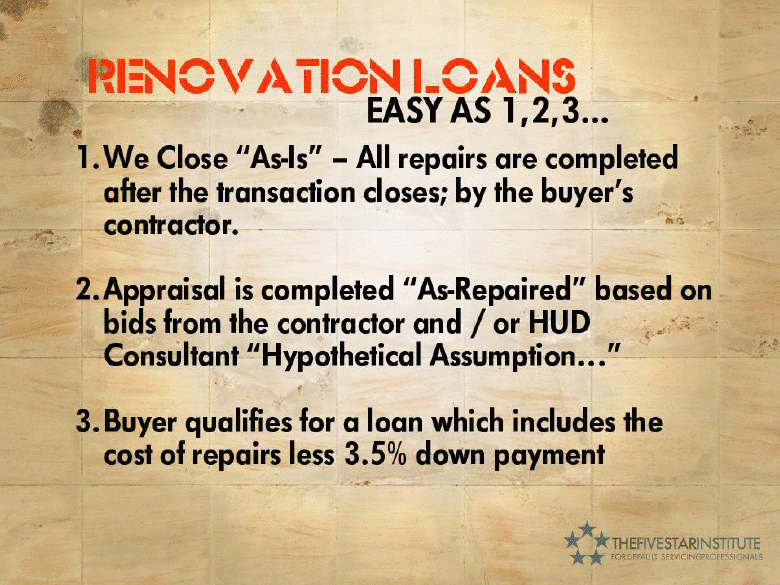What s the Best Way to Borrow for Home Renovations
Post on: 15 Август, 2015 No Comment

About
Mortgage applications fell to a 15-year low last week, according to a report out Wednesday from the Mortgage Bankers Association. It’s not surprising, given the recent uncertainty in the stock market and the fact that nearly 11 million Americans still owe more on their mortgages than their homes are worth. But mortgage rates both fixed and variable loans have hit 50-year lows. making this a spectacular time for homeowners in a solid financial position to refinance, or borrow for renovations. A New York homeowner named Joy recently asked me for the best way to borrow:
I am in a dilemma whether or not to refinance my mortgage, get a home equity line of credit (HELOC) or a home equity loan. The reason for the extra money is for some home repairs and improvements to the tune of $50,000. Currently, I have no debt, my mortgage with taxes is $1,400. I owe $110,000 on the home, which is worth $400,000 to $425,000. I’m retired. I have a small monthly retirement from my employer and am currently on unemployment. I am getting ready to collect Social Security next year. I have a healthy 401(k) with about $800,000 and liquid assets of $80,000. Can you advise which is the best way for me to go?
In your situation, I’d recommend the home equity line of credit. I checked with banks in your area, and found offers as low as 2.99% with no closing costs for people with excellent credit scores. HELOCs offer a quicker and easier process than a mortgage refinance, which would come with closing costs of several thousand dollars. I would only consider a refinance into a 30-year fixed-rate loan if your current mortgage is at a relatively high interest rate and you have many years left on the loan, because a new loan will cost a significant amount in interest over time.
There’s a big caveat here: Home equity credit lines carry variable interest rates typically with no cap, and that’s a concern given that you are on a fixed income. However, rates are expected to remain low for at least two years and likely beyond. In the event interest rates suddenly spiked, would you be comfortable using your cash on hand to pay down the line of credit as a Plan B?
The key is to have a written plan from the get-go to pay back the principle and interest on a monthly basis, earmarking, say, $400 to $500 each month toward paying it down. Look carefully at the bite that expense will take out of your budget. Your home is the collateral for this loan, and you don’t want to put yourself in a precarious position. You may even want to consider waiting a year until you’re actually collecting Social Security and have a better handle on your monthly income.
I’m also assuming you intend to stay in the home long-term rather than fixing up the place to sell, because with the depressed housing market, you may not recoup the cost of those upgrades. Good luck!
Struggling with your own personal finance situation? I welcome your questions but it’s also about your wisdom, ideas, and experiences that may help other readers. Email me at laura.rowley@teamaol.com. You can also follow me on Twitter @MoneyHappiness.
Content Solely Informational: Content on this site is for informational purposes only and is not intended to be investment advice, or any other kind of professional advice. You must determine for yourself or in consultation with a professional whether any financial strategy or advice is right for you.














